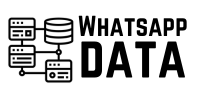What is data-driven content analysis?
Data-Driven Content Analysis is a research method that involves the systematic collection and analysis of data from various sources to gain insight and understand patterns in content. It uses quantitative and qualitative data collection techniques to examine text, images, videos, and other forms of content. By using statistical analysis techniques and text mining algorithms, researchers can uncover valuable information about audience preferences, sentiment, and trends. This method allows organizations to make data-driven decisions and optimize their content strategies for better engagement and impact.
Why is data-driven content analysis important?
Data-driven content analysis is important for several reasons:
-
Insights – By analyzing data, organizations can gain valuable insights into customer behavior, market trends, and content performance. These insights can inform decision-making and help organizations optimize their content strategies.
-
Personalization – Data-driven content analytics allow organizations to personalize their content based on audience preferences and interests. By understanding what types of content resonate with different segments of their audience, vietnam telegram data organizations can deliver more targeted and relevant messages.
-
Competitive Advantage – In today’s digital landscape, data is a valuable asset. Organizations that utilize data-driven content analytics have a competitive advantage over those that rely solely on intuition or guesswork. By using data to make content decisions, organizations can stay ahead of the curve and deliver content that resonates with their target audience.
Overall, data-driven seo content enrichment content analytics is essential for organizations that want to maximize the impact of their content and achieve meaningful results.
Benefits of data-driven content analysis
Data-driven content analytics offers several benefits to organizations. First, it provides insights into customer preferences, allowing businesses to create targeted and personalized content. This can lead to higher customer engagement and conversion rates. Second, data-driven content analytics helps identify trends and patterns in consumer behavior, allowing organizations to make informed decisions and stay ahead of the competition. Furthermore, it enables data-driven decision-making , reducing reliance on guesswork and intuition. By leveraging data, organizations can optimize their content strategies and improve overall performance. Finally, data-driven content analytics can uncover hidden opportunities and identify gaps in the market, helping organizations develop innovative solutions and gain a competitive advantage.
Data collection methods
Quantitative data collection
Quantitative data collection involves the collection of numerical data from a variety of sources. This may involve surveys, experiments, or the analysis of existing data sets. The data collected is usually structured and can be analyzed using statistical methods. Quantitative data provides objective and measurable insights and allows thailand data researchers to identify patterns, trends, and relationships. It is important to ensure that the data collected is reliable and representative of the target population. Table 1 provides an overview of common methods used in quantitative data collection.
Quantitative data collection is valuable for understanding numerical trends and patterns, making it a powerful tool in data-driven content analysis.
Qualitative data collection
Qualitative data collection is a research method that focuses on collecting non-numerical data to gain a deeper understanding of a phenomenon. This method includes techniques such as interviews, focus groups, and observations. Qualitative data provides rich and detailed insights into the thoughts, opinions, and experiences of individuals and allows researchers to explore complex social and behavioral phenomena. Researchers can use techniques such as thematic analysis and content analysis to identify patterns and themes within qualitative data. Using qualitative data collection methods in data-driven content analysis can provide valuable context and depth that complements quantitative data analysis.
Combining quantitative and qualitative data
Combining quantitative and qualitative data in content analysis allows for a more comprehensive understanding of the data. Quantitative data provides numerical and statistical insights, while qualitative data offers in-depth and granular insights. By combining these two types of data, researchers can gain a holistic view of the content being analyzed. This approach allows for the identification of patterns, trends, and themes that may not be apparent when analyzing each type of data separately. Additionally, combining quantitative and qualitative data allows for a more robust and reliable analysis, which increases the validity and reliability of the findings.
